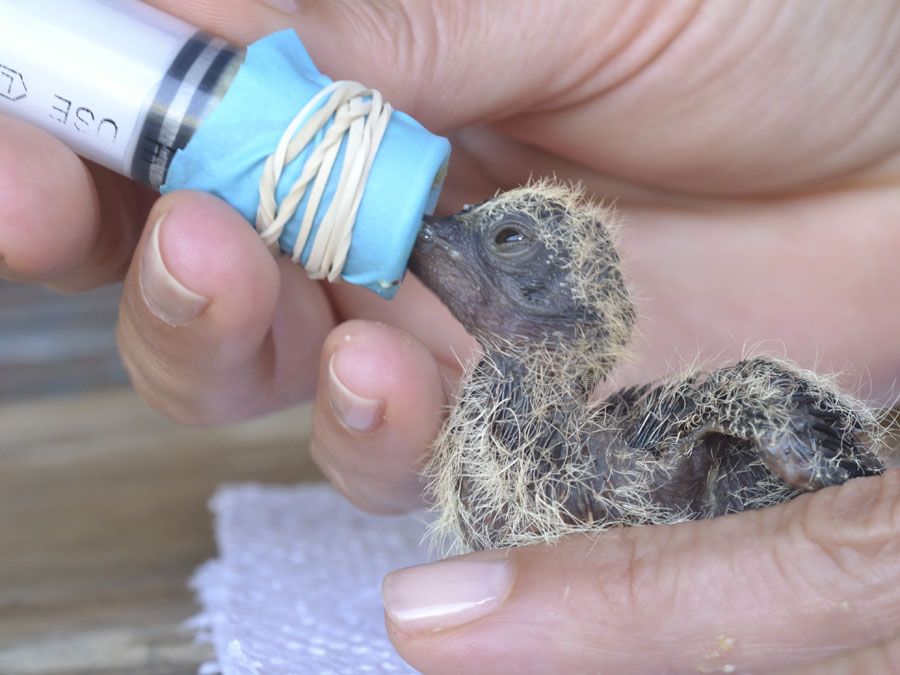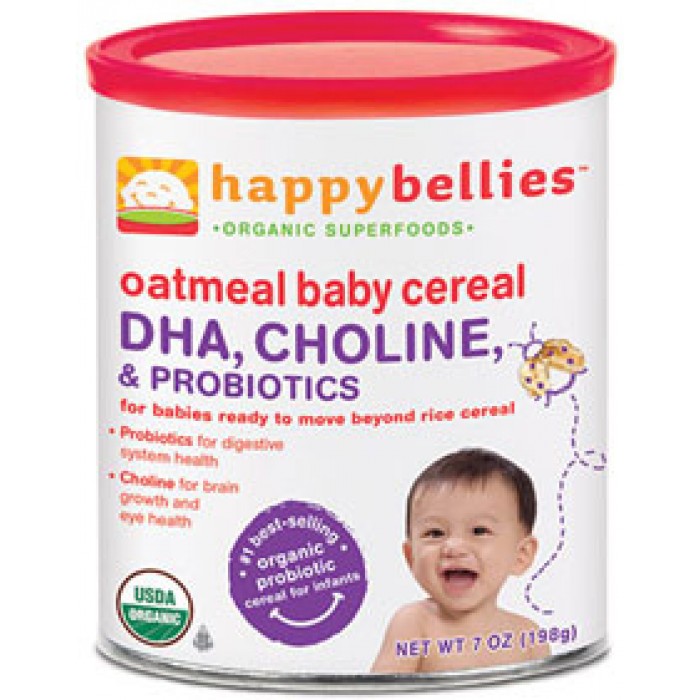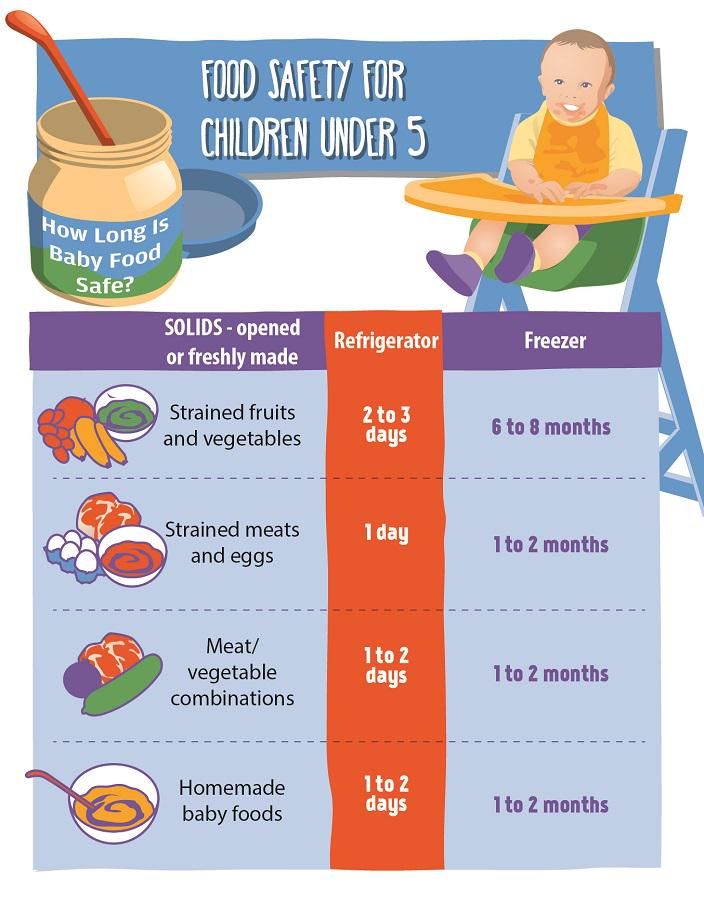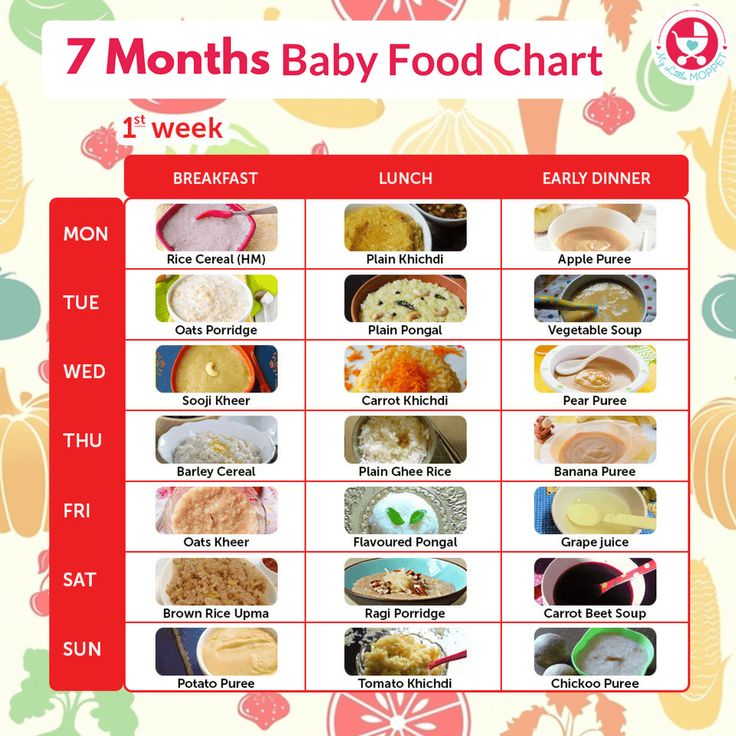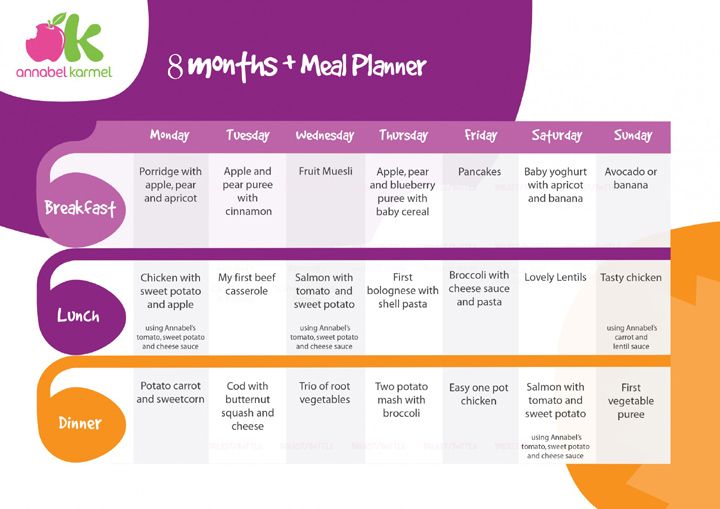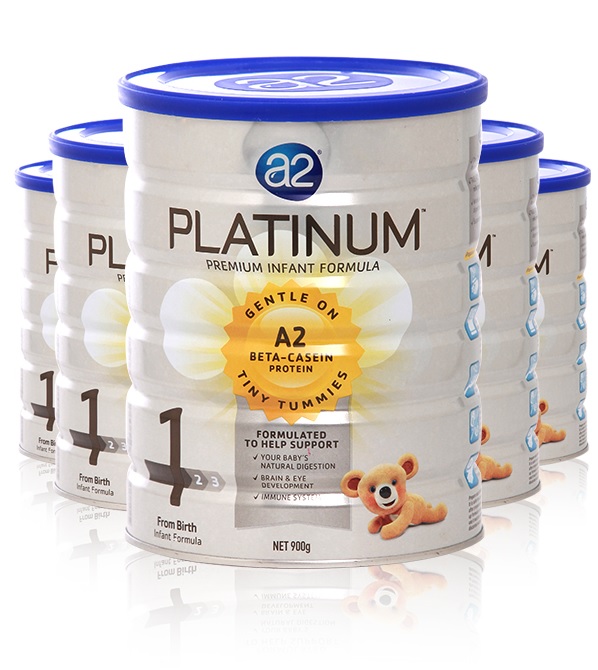How to feed a baby robin that fell out of the nest
What Do Baby Robins Eat? and How to Feed One! a How-To Guide
Either you found a baby robin that’s fallen from its nest, or perhaps you’re just curious and asking what do baby robins eat?
Well, here’s the guide on what baby robins eat, and if the need arises then how to feed one. So first let’s give you the quick answers, then we’ll get into more details…
How do baby robins eat? During the first week, the parents regurgitate partly digested food into the baby’s mouth. As they grow they eat a variety of food from earthworms, to whole worms and large insects, and even berries until they fledge to finally fend for themselves.
How do you feed a baby Robin? To feed a baby robin you can use a dropper, clean hands, or let the babies feed themselves when they become independent enough. Once released they will naturally be able to hunt for food and feed themselves.
what do axolotls eat ?
Please enable JavaScript
what do axolotls eat ?
Read on, or watch the video below from the Ranger Planet Youtube Channel.
What do baby robins eat and when
Baby robins are just that – babies, at first, and depend wholly on their parents for food.
However, what baby robins eat during the very first few days and onward changes as time goes by – and fairly quickly too.
Here’s the list of what baby robins eat at each growth stage. But if you’re looking to protect your baby robin, then be sure to check what eats robins to know what might want to prey on them. You might also be interested to know if it’s legal to keep a robin as a pet?
1 – 7 Days – baby robins eat…
When baby robins are with their parents, the parent robins forage for food for themselves, but also gather enough to feed their young.
The parent regurgitates this partly digested food into the baby’s mouth. This is the only way that baby robins eat and are fed during the first week from birth.
This includes partly digested insects, beetles, worms, berries, and seeds
7-14 days – baby robins eat…
Around this time, the parents pass larger portions of food or break up larger ones such as earthworms and deliver into the baby robin’s mouth.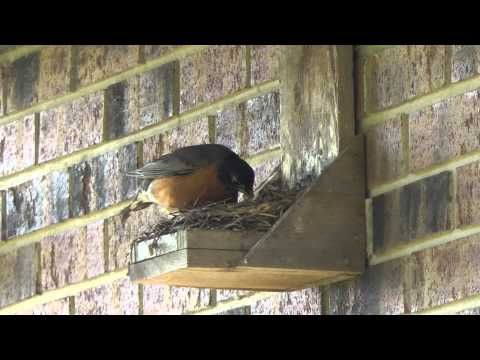
From here onwards the baby robins start eating more with each passing day.
Whole versions of insects, beetles, worms, berries and seeds.
After a period of this, the parents begin to let the baby robins eat the whole worm and other large insects on their own.
By this time a baby robin will be able to eat the equivalent of 14 feet of earthworms during its two-week nest life.
14 days plus – baby robins eat…
From this point, more often than not baby robins are able to eat food provided to them by the parents that are just placed in the nest. The baby robin is old enough to find and eat the food themselves within the nest.
In general, baby robins depend on the parents fully for their daily dose of food, until they are independent enough and can fledge the nest and fly away.
On average, the parent robins can make up to 100 visits a day to feed their young ones – that just shows how often the baby robins eat to grow up.
This is also why robins are very picky in choosing a territory to create their nest.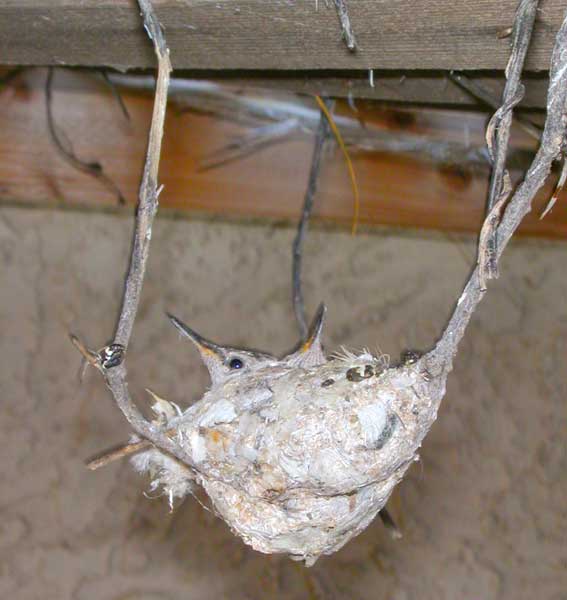 They need to ensure they live close to adequate food sources to make the hunt for food and feeding visits often and easy.chicks in a nest
They need to ensure they live close to adequate food sources to make the hunt for food and feeding visits often and easy.chicks in a nest
You might also like:
Do robins make good pets
Why do robins hop
Do birds have ears
Do birds have teeth
So let’s move on to how you would feed a baby robin.
How to feed a baby robin?
If you’re in the situation where you have a baby robin you need to take care of and hand rear, perhaps one that fell from the nest or lost its parents. Then naturally, there are plenty of things you will have to know about feeding baby robins – let us give you some guidance.
There are, thankfully, many ways and methods that have worked to feed baby robins, below are three safe methods to feed a baby robin.
1. Using a syringe to feed a baby robin
You can use a syringe, like this one, or an eyedropper to feed baby robins.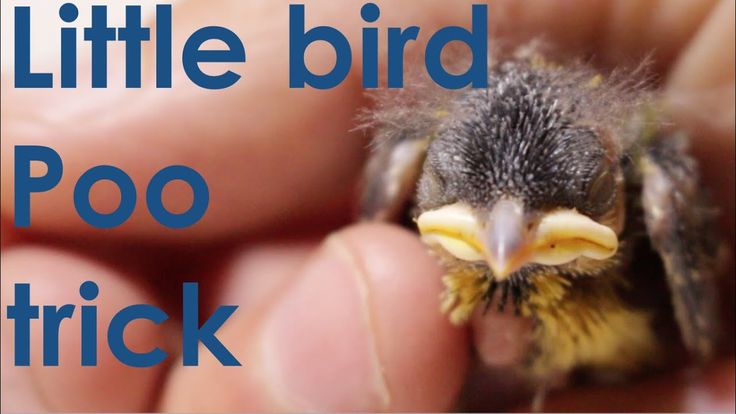 For this method, the best food would be to get a baby bird formula mix.
For this method, the best food would be to get a baby bird formula mix.
With this formula, use the syringe and simply follow the instructions for feeding.
Alternatives to baby bird formula
Instead of a bird formula mix, you could even use baby formula or wheat cereal like farina. Or at a push, you might be able to soak dried dog food which has been known to feed baby robins quite well.
However, when feeding these products be sure to still use the syringe or dropper. Try to make sure the products are mushed down enough to pass through the dropper without getting blocked.
At first, one or two full droppers will almost certainly fill the baby robin, but as they grow they’ll likely need more of it – and potentially more often. Being a robin parent is a demanding job!
The baby robin will let you know when it’s full, usually when it’s hungry or wants more food it opens its mouth automatically.
Be aware of this too, do not try to feed the robin when it is not asking, as you can easily overfeed them, which is just as risky as not feeding them.
So it’s important to observe if the bird is full or not before trying to encourage them to eat further.
2. Using your hands to feed a baby robin
Hands can also be used to feed baby robins. Moistened duck or chicken feed that are processed well with an even texture can also make some good reasonable food baby robin food.
When using the hands it’s important to be hygienic. Not only when feeding but also while making the food using the hands or when handling the bird.
To feed a baby robin using your hands, take a tiny pinch of food and stick it to the tip of the finger and all you have to do is touch the corner of the bird’s mouth.
The baby robins will automatically open their mouth and you shouldn’t have any trouble passing it into their beaks.
Another great thing about using hands to feed baby robins is that you will get a good sense of when to stop because the baby robin will stop opening their mouth when they feel full, unlike droppers which can be inserted into the mouth anyway – even if the bird is already full.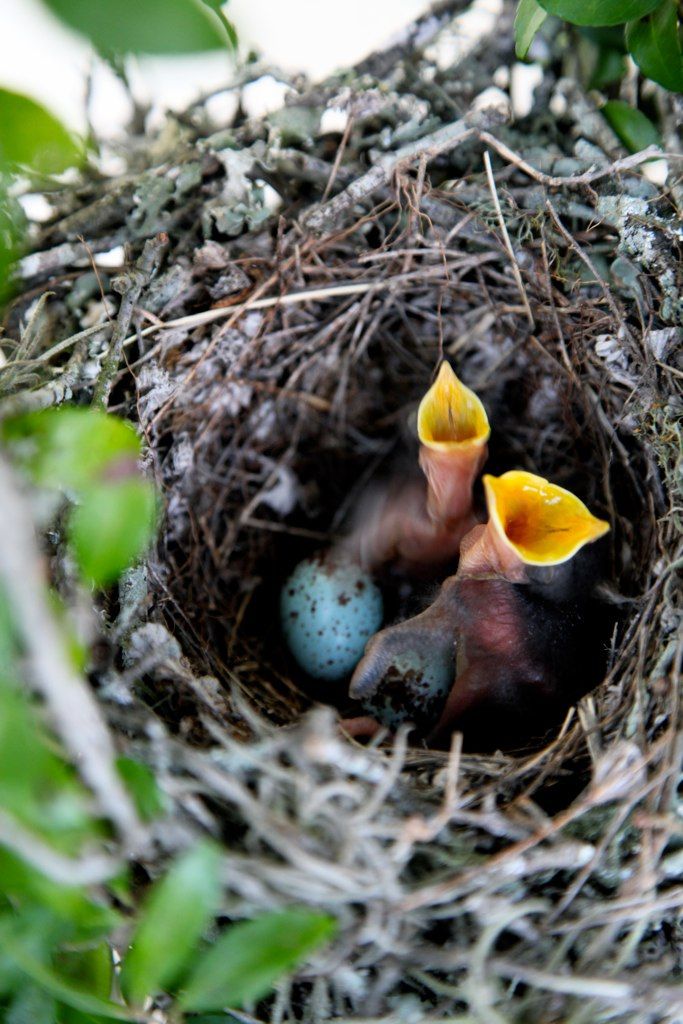
3. Allow the baby robin to feed on its own
If you get to this point then congratulations, or if the bird already has some plumage and appears to be an older chick.
This method works mostly when the baby robin is a little more grown-up and can handle the food on their own.
This is a method that allows the baby robins to feed themselves by placing the food on the ground next to them.
For this, offering small berries, or using mealworms, earthworms, or grubs near the ground next to where they rest will work fine.
This will also allow the birds to come and feed whenever they feel hungry. On average baby, robins may have to be fed every 5-10 minutes at peak times.
When feeding baby robins, make sure that…
- The food is at room temperature. Even if the food is refrigerated, it’s important to make sure the food is at room temperature when feeding the baby robins.
- Make sure the food is not spoilt, has no fungus or bacteria when feeding.

- The food should have a fine texture and even toward slushy, but smooth enough to get through the delicate throats of baby robins.
- Up to three weeks old, the baby robins will be grown up enough to find their food. So by this time, it’s good to allow the baby robins to eat of its own accord and just make sure food is available.
Then one day, they will fledge and fly away. And you can smile in the knowledge you probably just saved a wild bird’s life. If the baby robin does not survive, then it was never meant to be, and at least you provided it with some comfort and the best chance of survival.
So finally…
We hope this has been useful in answering the question – what do baby robins eat? And hope you’ve been able to put the help on how to feed one to good use.
Tweet
What Do Baby Robins Eat? How to Take Care of a Baby Robin
What’s This Post About?
Robins are pretty songbirds that belong to the Turdidae family. There are two types of species in this family: American Robin and European Robin. They can be differentiated by appearance, region, and plumage. Read on to find out more about them.
There are two types of species in this family: American Robin and European Robin. They can be differentiated by appearance, region, and plumage. Read on to find out more about them.
This post consists of an overview of what do baby robins eat. You can easily come across a baby by making sure there are robins in your backyard.
Attract these birds to your yard via bird feeders containing their favorite food sources. Robin babies can take up to one whole day to hatch properly from the eggshell.
Robin nestlings consume earthworms to survive. They prefer eating insects like mealworms, grubs, earthworms, crickets, grasshoppers, beetles, etc. Taking care of a baby robin is very challenging. You need to ensure that the bird is warm, fed, and safe.
What Are the Stages of Robin’s Life?
Growth and development of a robin in different life phases.
Like all animals, robins also go through different phases in their life. Developing from a baby to an adult is quite a long process. Each stage carries with it additional requirements with regards to dependency, food, behavior, etc.
Each stage carries with it additional requirements with regards to dependency, food, behavior, etc.
Robins do not mate for life; the pairs stick together throughout the breeding season then depart. The breeding season comprises of 2 – 3 nesting. The same two birds might probably mate again and stay together in the next year’s breeding period.
Watch this video to visually see how a baby robin transitions into an adult:
The Egg
These birds begin courting in late winters or early spring. Robin’s produces 5 – 6 clutches with one egg each day. The eggs take about 12 – 14 days to hatch, and tiny baby robins are born.
Robins lay blue eggs. The eggshell of the bird’s egg is of a cyan shade with a matte finish. The egg length is usually about 2.7— 3 cm, and it is 2.1 cm wide.
FUN FACT
Robins have up to three broods in a year, many of their babies do not survive.
1 to 7 Days
For the first few days, the babies can only open their beaks and not their eyes. They are delicate little bird babies with pink skin and light grey feathers patched on their bodies.
At this time, the baby robins are entirely dependent on their parents. The parents look for food and bring it back to the nest to feed their young. These babies survive on the partly digested food received from their parents directly in their mouths. This is the only way the babies can be fed during the initial days.
The food they eat includes partially digested worms, beetles, seeds, berries, and small insects.
INTERESTING FACT
Robins roost together in trees. Up to 200,000 robins can roost together at once.
7 to 14 Days
Once the hatchlings have transitioned into nestlings, they grow bigger, start developing feathers, and can open their eyes.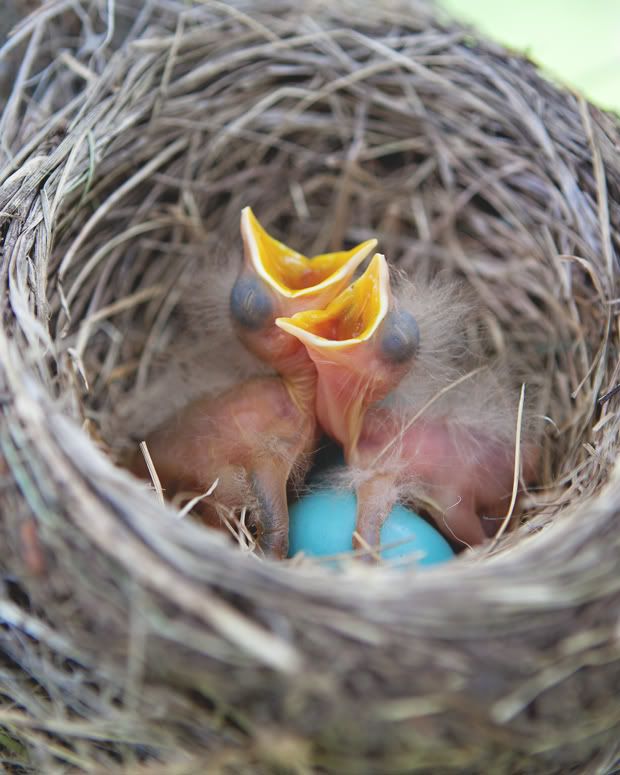 They express their food needs through loud chirping; the mother robin feeds them food and cleans the nest.
They express their food needs through loud chirping; the mother robin feeds them food and cleans the nest.
During this phase, the parent bird starts feeding them large portions of food through their mouth. The young birds consume more and more with each passing day. This is the baby’s growing period which is why their demand for food has increased.
They eat the whole version of beetles, worms, seeds, insects, and berries. Soon the parents let the baby robins eat the entire insect or fruit on their own.
FUN FACT
As soon as a baby robin grows 14 days old, it can consume food equal to 14 feet of earthworms.
14 Days and Over
At this stage, the birds are getting bigger, fuller, and gaining strength. Parents now place the food in the nest, and the baby robins find it and feed on it themselves. However, the young birds do depend on their parents until they can fly off the nest.
Only when they enter the fledgling phase, they become independent.
INTERESTING FACT
The parent robin has to make approx. 100 visits per day to feed their babies. This is because baby robins require a lot of feed to grow and develop. This is also why robins are careful when they pick a territory – they ensure that the place they live in has easy access to ample food sources.
What Can You Feed a Baby Robin?
Every bird has its preference; let’s explore what baby robins prefer to eat.
Robins are omnivorous birds and need a balanced diet to survive. Therefore, the best thing to feed a baby robin would be insects such as crickets, beetles, or grasshoppers, earthworms, mealworms, fruits, and berries.
The main aim of a balanced, nutrient-rich diet for a robin is to help it grow into a healthy adult. On average, a baby robin has to be fed after every 5 to 10 minutes. Further, we will mention a list of food you can feed the babies with.
INTERESTING FACT
Jays and crows are a threat to baby robins.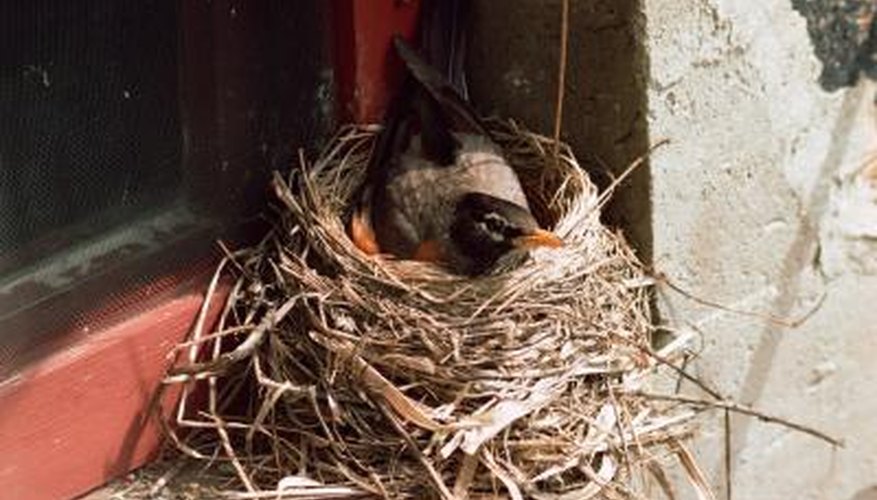 This is because they tend to eat these baby birds in the absence of their parents.
This is because they tend to eat these baby birds in the absence of their parents.
Earthworms
Baby robins love to indulge in earthworms or mealworms. They are fed worms by their parents as it proves to be a nutritious snack for the birds. However, feeding robins can be challenging, and the mother needs to be on her wings to find food for her babies.
If the baby bird is left alone for even a week, it will start looking weak or sick and may even die.
Insects
Insects are the best food option for baby robins. Adult robins feed mainly on beetles and grasshoppers. Nestlings are given partly digested beetles and grasshoppers from their parents.
If you plan on feeding a baby robin an insect on your own, then make sure it is old enough to eat by itself.
PRO-TIP
The best time to feed insects to baby robins is during the spring season. The baby is old enough to eat food independently and can easily digest insects like crickets and beetles by this time.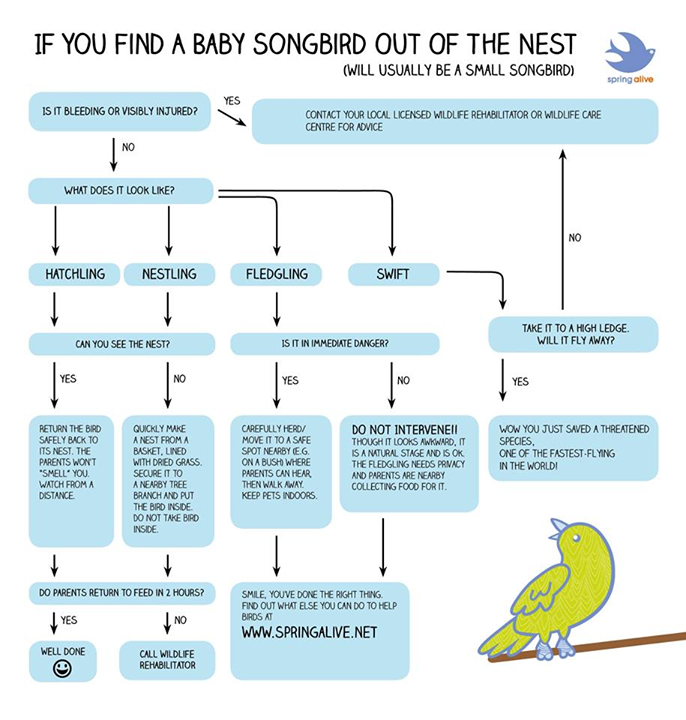
Fruits and Berries
Fruits and berries are also something that baby robins enjoy. They can eat fruits like grapes, blueberries, blackberries, and strawberries.
Make sure that the fruits are cut up into tiny pieces before being fed to the young birds. If the baby robin is strong enough, you can place these fruits on the ground and wait for them to feed on it.
INTERESTING FACT
Baby robins stay in the nest for a maximum of 16 days before practicing their first flight. After that, the mother robins protect their babies till the time they learn how to fly smoothly without any falls.
Do Baby Robins Need Liquids to Survive?
Food is a need, but is water also required for baby robins to survive?
Water is not essential for a baby robin. This is because the food they eat is moist, and it keeps them hydrated throughout the day. If the fledgling is not eating correctly, it is advisable to only put a drop of water on the bird’s beak.
If you plan to provide water to these young birds, then make sure that the water is lukewarm and fresh. They do not have a high-water requirement but when needed, try to be very careful, feed tiny drops of water at a time.
Once the baby robin grows, it will be able to drink water independently through shallow dishes. Although the food provided by parent robins is enough to keep the baby hydrated, if you find an orphaned baby robin that does not eat right, make sure you use a dropper or syringe to put a few drops of water in its mouth timely.
Moreover, birds, unlike mammals, do not consume milk. The digestive systems of baby robins are not strong enough to tolerate milk. It is a misconception that it is alright to provide milk with bread to birds. However, milk can be highly toxic.
PRO-TIP
Never force water directly in the baby bird’s mouth; it may lead to the young bird choking and dying.
What Should Not Be Fed to Robins?
Specific food sources should be avoided entirely while feeding a robin. Let’s find out what they are!
Let’s find out what they are!
Robins can not eat anything large as they are little songbirds with a small beak. It is best not to feed these birds bread, avocadoes, asparagus, and many fruits and vegetables. Milk or alcohol should also be avoided as it may harm the bird’s internal system.
Try not to put out bird mixes for robins in your backyard. Most bird mix is viable for larger bird species to consume as they consist of beans, rice, dried peas, lentils, and wheat that a small robin might not be able to digest.
Ideally, bread should not be given to robins as it does not have the proper nutrients to keep the bird safe and warm during the winters. However, bread can be given at rare instances but only as a snack.
Please do not leave out milk for robins; they might not be able to digest it. However, fermented dairy products such as soft cheese can be given in tiny amounts.
Other items that should be avoided for a robin are:
- Vegetables: eggplant, asparagus, onions, olives, parsley, spinach, and mushrooms.
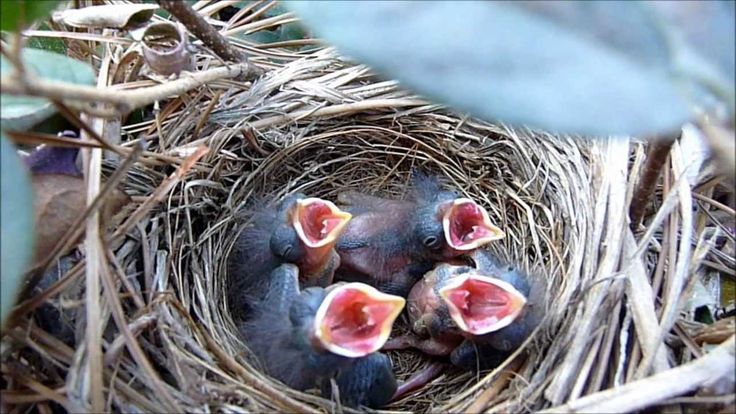 These might be healthy for humans but are not something you can give to robins.
These might be healthy for humans but are not something you can give to robins. - Nuts and Seeds: pear seeds, apricot pits, apple seeds, cherry pits, plum pits, peach pits, and raw peanuts should all be avoided.
- Beans: dried beans consist of hemagglutinin that is dangerous for birds. However, cooked beans are perfectly fine to give.
- Fruits: rhubarb and avocados are not safe for birds like robins.
- Sugary food: chocolates are not advisable to feed a bird.
- Liquids: alcohol, coffee, tea, carbonated drinks, and milk.
The food items listed above should be kept away from the birds. These can make the birds fall sick or be fatal to the little birds.
PRO-TIP
To distinguish between a male and a female robin, examine the color of their heads. A male robin has a darker shaded head, while a female robin has a pale brownish-gray color.
How To Attract a Robin?
Tips and tricks to attract a robin to your yard!
Attracting a robin to your yard is very simple and easy. Just keep an ample amount of food supply in your yard, grow trees and bushes to provide an ideal nesting site for the bird, and make sure your yard is safe and secure for the birds.
Just keep an ample amount of food supply in your yard, grow trees and bushes to provide an ideal nesting site for the bird, and make sure your yard is safe and secure for the birds.
Feed Them
Robins like to consume invertebrates and insects in the summer and fruits and seeds in the winters. Make your yard similar to the wild habitat that they live in. Plant trees in your garden to encourage invertebrates in your garden. This way, you can provide food naturally to these birds.
Provide Nesting Opportunities
Birds like robins are always looking for a safe space to stay in. Their main aim is to find a hidden spot to nest, away from the predators.
The ideal nesting spots for a robin are dense vegetation, climbing plants, and hedges. Moreover, you can hang up nest boxes for these little creatures. They prefer small nest boxes with an open front and under natural covers.
Safety From Predators
Robins are likely to settle in your yard if they feel safe from large predators such as dogs or cats. The bird feeders should be near dense vegetations to hide easily if they sense danger.
The bird feeders should be near dense vegetations to hide easily if they sense danger.
The nest boxes should not be directly in contact with the sun and wild winds. Clean the feeders and nest boxes regularly to avoid bacteria formation that could harm the birds.
How To Take Care of a Baby Robin?
Steps to take care of the adorable little robin babies.
If you see a baby robin stranded on the ground, you should take action to care for it. If the bird is injured and its parents are nowhere to be seen, it is advisable to keep it warm, feed it, and wait for it to get better before you set it free.
PRO-TIP
Baby robins require extra heat at night. If you do not have a brooder, you can keep a heating pad under the box to provide warmth.
Watch The Baby
If you come across a baby robin on the ground, it is possible that the fledgling was learning how to fly but fell over. Stay at a safe distance and keep a watch over the baby bird to see if its parents fly by to take it. If the parents do not return in approximately 30 minutes, go near the bird and check for any signs of injury.
If the parents do not return in approximately 30 minutes, go near the bird and check for any signs of injury.
INTERESTING FACT
When the baby bird falls, it will likely chirp loudly to call its parents. This is why you should wait for a good time before acting; the parents might return to the nest and look for their baby nearby.
Place The Baby in a Warm Place
If you are sure that the parents of the baby robin are not to return, place the baby in a box covered with a soft, warm towel. Don’t forget to punch holes for the air to pass.
Cover the lid as the babies feel safe and calm in darkness; they may stop fluttering around in the covered box.
Make sure that the baby bird is warm and cozy. Remember that you should not keep the box directly under the sun or in front of a heater; it can lead to dehydration or overheating.
PRO-TIP
Place a hot water bottle under the towel that is placed in the box. This will help keep the baby robin warm.
Feed The Baby
Feed the baby bird after every hour if it is a fledgling. If the baby robin is featherless, then feed it after every 30 minutes. Food that can be fed are:
- Worms
- Canned dog food
- Canned cat food
Be sure to mash the worms before feeding them to the birds. Young babies cannot digest whole worms properly. However, you can use tweezers or toothpicks to put the food directly into the baby’s mouth.
Follow each bite with a drop of water. You can place the water drops on your fingertips and put them close to the bird’s beak. Baby birds do not need a lot of water; their food is enough to keep them hydrated.
WARNING!
Do not hold the bird while feeding it, and do not pour the water directly into the baby bird’s mouth; it can fill its lungs with fluid and cause pneumonia.
Keep Reading!
Baby robins are adorable little creatures that you can easily attract to your yard. The parents are in charge of keeping the babies safe and secure.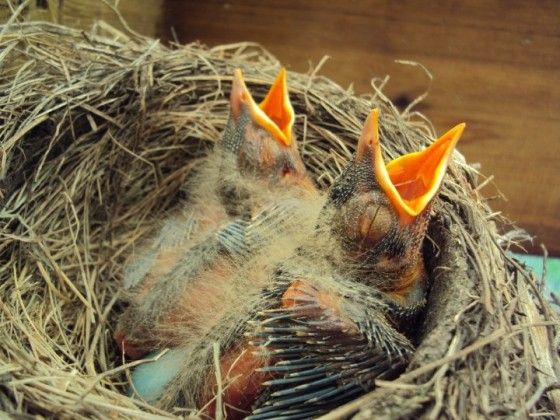 However, if you spot a baby robin on the ground without any sight of its parents, it is your responsibility to take care of it.
However, if you spot a baby robin on the ground without any sight of its parents, it is your responsibility to take care of it.
This post will help you identify food sources given to a baby robin and those that should be avoided. In addition, tips on how to take care of an orphan baby bird are also mentioned to guide you through a similar situation.
If you want to know more about baby birds, such as the baby bluebird, you can read up on this post .
What Do Baby Bluebirds Eat? How to Take Care of Baby Bluebirds
Bluebirds are exotic little creatures that require care and attention. To know exciting facts about baby bluebirds, read below.
By David A. Swanson
Bird Watching USA
My name is David and I'm the the founder of Bird Watching USA! I started Bird Watching with My father-in-law many years ago, and I've become an addict to watching these beautiful creatures. I've learnt so much over about bird watching over the years that I want to share with the world everything I know about them!
Posted in:
description of the bird, characteristics and habitat, species
The robin is a small bird of the flycatcher family of the passerine order. It has several names - it is often called a robin, sometimes a dawn or an alder. Malinovka is known for her beautiful voice. Birds live near water bodies in mixed and broad-leaved forests, overgrown parks and gardens. They live in the northwestern part of Africa, on the northern coast of the Mediterranean Sea, in Scandinavia, western Eurasia. The name of the bird was due to its bright sign - an orange speck on the breast.
It has several names - it is often called a robin, sometimes a dawn or an alder. Malinovka is known for her beautiful voice. Birds live near water bodies in mixed and broad-leaved forests, overgrown parks and gardens. They live in the northwestern part of Africa, on the northern coast of the Mediterranean Sea, in Scandinavia, western Eurasia. The name of the bird was due to its bright sign - an orange speck on the breast.
Appearance and behavior of the bird
The bird is 15 cm long and has a short sharp beak, black eyes and thin paws. Young robins are pale in color with white and brown spots. Adults look more bright:
- vertex and dorsum are grey-brown;
- breast and underside are orange;
- belly - light grey.
Large black eyes allow birds to navigate through dense vegetation. Females and males do not visually differ from each other. Individuals living in the southern regions have a more saturated plumage color.
Scientists say that robins living in warm countries are less mobile than those living in cold regions.
Bird activity peaks in the morning and before bedtime, but there are exceptions.
You can hear the singing of robins in the spring, when their mating season begins. Unlike nightingales, in which only the male sings, in robins, both the male and the female participate in the trills. The male individual by singing notifies competitors that the territory is occupied, the female one reports that she is looking for a mate.
FUN FACT . The robin is one of the first to sing, just before sunrise. Birds also actively sing at sunset, and sometimes at night.
On the video you can listen to the wonderful singing of the robin.
There are more male robins in nature than females, so not everyone manages to find a mate. Males that have not found a partner do not guard their territory. In addition, single males gather in flocks and live in groups until they start a family.
A male robin that has a pair behaves much more aggressively towards other males and even other types of small birds. The male without much thought attacks the stranger. In such civil strife, about 10% of robins die.
Robins live for about 2-3 years. In captivity or under favorable weather conditions, birds live up to 10 years. Their numbers are negatively affected by cold winters and a reduction in the volume of food supply.
INTERESTING FACT. Robins living in England and Ireland are not at all afraid of people, since no one touches them. Birds can easily be approached at close range.
A robin sits on a branch with berriesRobins love water treatments. In the mornings, on the banks of reservoirs, you can see flocks of birds splashing in the water with pleasure. If there is no pond or river nearby, the birds use drops of morning dew to bathe.
To clean their feathers from parasites, robins fly to the anthill and bathe in it. After that, they go out into the sun and sunbathe. In winter, birds bathe in the snow.
In winter, birds bathe in the snow.
Migratory or settled
In warm regions, the European Robin does not fly south for the winter. Individuals living in cold climates are migratory. For example, the British robin stays wintering in the same place where it lives. However, some females still fly to Italy and Spain. Birds living in Russia and in the Scandinavian countries fly to Western Europe or the British Isles. In Kazakhstan, part of the robin does not fly away, but remains to winter in the area of the Alakol basin. The European robin prefers to settle in spruce forests, while the British robin prefers to settle in gardens and parks. In the Tobolsk region, nesting robins were found in birch groves with dense undergrowth. Attempts have been made to settle the robin in Australia and North America, but they have not been successful.
Most of the robins migrate from the Leningrad Region to Europe for the winter, but winterings of some individuals have been recorded, especially during warm mild winters. So, for example, there was a case when a robin nailed to a flock of sparrows. People fed the birds with bread crumbs, sunflower seeds, and millet. The robin came down with the sparrows to peck at the food. During severe frosts, the robin ate only what fell on a warm sewer manhole. She also tried to taste the mountain ash, but to no avail - the frozen berries did not succumb to her short beak.
So, for example, there was a case when a robin nailed to a flock of sparrows. People fed the birds with bread crumbs, sunflower seeds, and millet. The robin came down with the sparrows to peck at the food. During severe frosts, the robin ate only what fell on a warm sewer manhole. She also tried to taste the mountain ash, but to no avail - the frozen berries did not succumb to her short beak.
FUN FACT . Outside the city, robins try to winter near a non-freezing reservoir or stream. Throughout the day, the birds hide in the bushes, but twice a day they appear near the water and spend about an hour there in search of food. Along the shores, birds find dry seeds of herbs and plants.
What is included in the diet of the robin
The diet of robins consists of various insects, worms, fruits and berries. Sometimes she enjoys hunting snails. In the presence of sufficient lighting, robins continue to hunt for insects at night. With the onset of cold weather, the diet of birds becomes poorer. They switch to plant foods: seeds, crumbs, grains. Sometimes robins follow wild boars in search of food in winter, as they know that animals often dig the ground. It may contain seeds or grains. Robins are not afraid of water and in search of food they fly to the shores of non-freezing lakes.
They switch to plant foods: seeds, crumbs, grains. Sometimes robins follow wild boars in search of food in winter, as they know that animals often dig the ground. It may contain seeds or grains. Robins are not afraid of water and in search of food they fly to the shores of non-freezing lakes.
During nesting in Russia and CIS countries, the diet of the robin consists of 92% of food of animal origin: eggs of aphids, centipedes, weevils and other arthropods. From food of plant origin, raspberry seeds predominate. In early - mid-autumn, insects make up 87% of the bird's menu, the rest is elderberry, blueberry, weed seeds.
If robins live near the dwelling, in the cold season it is worth helping the birds and feeding them. Feeders can be filled with:
- grated carrots;
- small plant seeds;
- millet groats;
- dried or fresh berries.
Natural enemies
There are many natural enemies of robins - these are owls, falcons.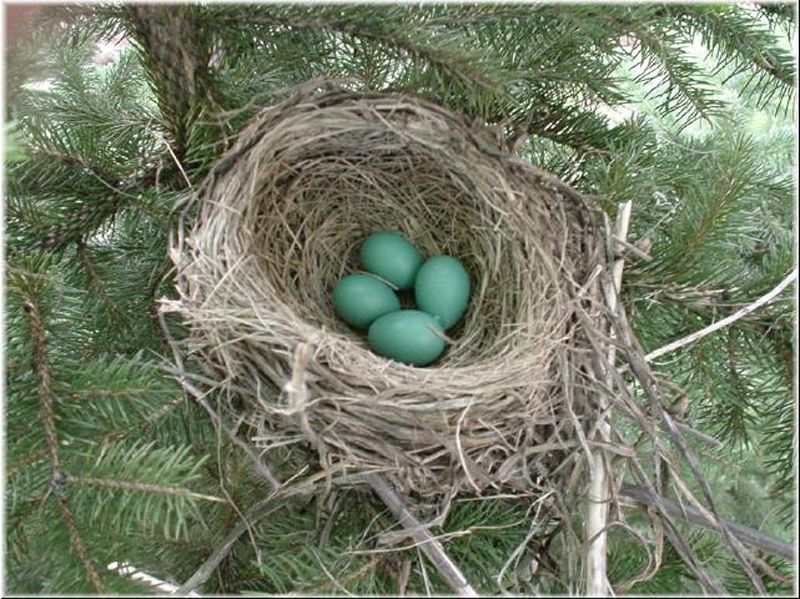 Small predatory animals destroy their nests, eating both eggs and chicks. Also, hungry crows and magpies are not averse to eating eggs. Since robins often run on the ground, here they can become prey for cats. Humans negatively affect the habitat of birds by reducing the area of wild forests.
Small predatory animals destroy their nests, eating both eggs and chicks. Also, hungry crows and magpies are not averse to eating eggs. Since robins often run on the ground, here they can become prey for cats. Humans negatively affect the habitat of birds by reducing the area of wild forests.
Reproduction and offspring
The robin can raise 2 offspring per year. If one of them dies, the birds may lay eggs a third time. The female is looking for a partner. She flies into the territory of the male, which usually behaves aggressively. The female begins to sing, the male answers her with frightening sounds. The female flies away from him, and then returns again. She demonstrates humility, trembles, clings to the ground. In the end, the male, feeling a sense of superiority, accepts her into his territory.
A robin's nest with offspring After fertilization, the female starts building a nest out of twigs, grass and mud. In it, the bird lays 5-6 green-blue eggs. In the second clutch, the number of eggs may be less.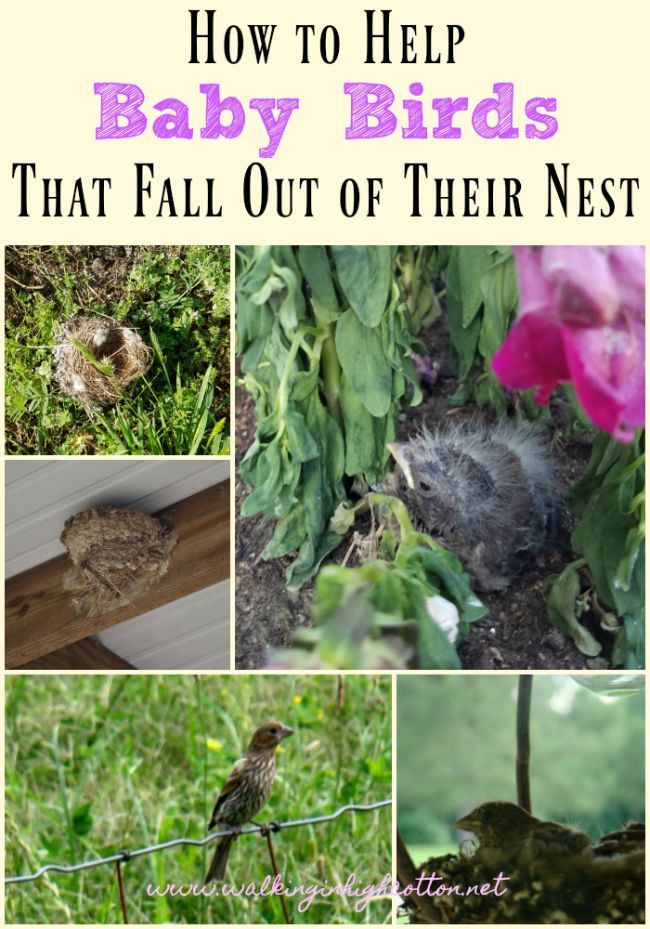 One pair of robins usually covers an area of 60-120 m². Sometimes nests of different families are found at a distance of 50 m from each other. Robins are quite conservative and rarely change their habitat. Change of territory is possible in case of ruin of their nests or death of chicks. Then the parents fly away from their usual place and look for a safer nest for the device.
One pair of robins usually covers an area of 60-120 m². Sometimes nests of different families are found at a distance of 50 m from each other. Robins are quite conservative and rarely change their habitat. Change of territory is possible in case of ruin of their nests or death of chicks. Then the parents fly away from their usual place and look for a safer nest for the device.
Incubation of eggs lasts 2-3 weeks. During this period, the male feeds the female. Both parents take care of the born chicks. Babies are born completely naked. So that they do not freeze, the female sits in the nest for some time and warms them. Parents actively feed their babies for about 16-20 days. Soon the female makes the next clutch.
Chicks show their first attempts to fly three weeks after birth. After a month, they fully fledge and leave the nest.
INTERESTING FACT. Young robins are very curious and fearless. Sometimes they can run after a person.
There are rare cases of robins capturing the nests of smaller birds along with other people's eggs. For example, a situation was recorded when a pair of robins settled in the nest of a rattlesnake warbler. At first, they incubated their own and others' masonry, but in the end, the parents removed the eggs of the warbler. There were cases when robins could not distinguish other people's eggs from their own, and raised the chicks of other birds. This is actively used by cuckoos. They often lay their eggs on robins. Usually, the cuckoo leaves only 1 egg in one nest, otherwise the caregiver birds will not be able to feed two chicks. In the Zhelezo tract, Leningrad Region, ornithologists observed a robin's nest, where there was a cuckoo. He was younger than the robin chicks, and at first his parents brought him food less often than their chicks. When the cuckoo grew up, the situation changed. The older the foundling became, the more often the robins brought him food.
For example, a situation was recorded when a pair of robins settled in the nest of a rattlesnake warbler. At first, they incubated their own and others' masonry, but in the end, the parents removed the eggs of the warbler. There were cases when robins could not distinguish other people's eggs from their own, and raised the chicks of other birds. This is actively used by cuckoos. They often lay their eggs on robins. Usually, the cuckoo leaves only 1 egg in one nest, otherwise the caregiver birds will not be able to feed two chicks. In the Zhelezo tract, Leningrad Region, ornithologists observed a robin's nest, where there was a cuckoo. He was younger than the robin chicks, and at first his parents brought him food less often than their chicks. When the cuckoo grew up, the situation changed. The older the foundling became, the more often the robins brought him food.
The activity of caring for the robin's offspring does not depend on the weather: both in rainy and sunny weather, ornithologists observed long and short periods of feeding. During the white nights, the duration of feeding the chicks increased to 19 hours a day. Drizzling rain does not significantly affect bird activity. Only a heavy downpour can become a hindrance.
During the white nights, the duration of feeding the chicks increased to 19 hours a day. Drizzling rain does not significantly affect bird activity. Only a heavy downpour can become a hindrance.
Unusual robin nests
Robins usually hide their nests under cover, even if they are close to the ground. In villages or city limits, robins may build a nest near human habitation, for example, on the roof of a house or barn. There was a case when a robin's nest was found, which was arranged on an old bag and a coil of wire hanging on the wall of an abandoned house. Ornithologists were surprised that the "house" was in the open. It had a solid base of dry grass and synthetic material, the bowl was made of dry leaves and moss, and the bottom was lined with grass and hair. The nest contained a clutch of 7 eggs.
Robin built a nest in a hollow tree Rarely, robins settle in artificial plank structures without covers. For example, in the Moscow region, four such nests were found at a height of 3. 5-4 m above the ground. The robins liked only houses with an area of about 200 cm² and a wide notch with a diameter of 6-7 cm. All the boxes hung in the forest for about 4-5 years, the boards were darkened from time to time. The following year, the observers decided to hang new boxes of the same size, but the birds did not settle in them. Maybe they didn't like the fresh board designs. There were also cases when robins made a nest in a titmouse-hollow.
5-4 m above the ground. The robins liked only houses with an area of about 200 cm² and a wide notch with a diameter of 6-7 cm. All the boxes hung in the forest for about 4-5 years, the boards were darkened from time to time. The following year, the observers decided to hang new boxes of the same size, but the birds did not settle in them. Maybe they didn't like the fresh board designs. There were also cases when robins made a nest in a titmouse-hollow.
How chicks change their plumage
Robin chicks are covered with feathers on average in 12 days. However, its cover is significantly different from the plumage of an adult bird. On the 20th day, flight feathers appear. The helmsmen grow after another 6-7 days. Then the down-feather cover appears in the lower part of the wing. The change of nestling plumage can be divided into five stages:
- the first includes the renewal of feathers on the chest, then in the center of the back, on the hips, shoulders, neck, wings;
- the second is characterized by the change of feathers on the head, then on the small upper covert feather lines of the wings;
- at the third stage, all feathers on the body are replaced, except for the near-eye part; by the end of the molt, the young bird already looks like an adult;
- the fourth stage includes the change of cover on the periorbital part of the head, the renewal of vibrissae and the stratum corneum of the skin;
- the fifth stage is the growth of feathers on the abdomen, back, thighs and head of the bird.

When capturing young robins from different broods, ornithologists concluded that the timing of molting of early and late chicks is significantly different. They depend on the length of daylight hours. Nestlings born at the beginning of summer took longer to change plumage than those of later broods. With a reduction in daylight hours, a decrease in the duration of molting was noted, and the change of feathers accelerated.
Cases of polygyny in robins
Although robins are considered monogamous birds, cases of polygyny have been noted by ornithologists in Karelia. Moreover, males and their first females were 1-2 years old, and their second partners were older than 2 years. Scientists examined all the robins that were nearby to understand what caused the polygyny. They found that mating with the second females took place while the first ones were busy incubating the eggs.
Robin Hatching Chicks Male robins actively feed their chosen ones before mating. Females hatching eggs receive food from males 1 time in 45-60 minutes. At this time, the males have enough time to look after another female. It is also interesting that the first females nested in more convenient places - spruce forests and thorny bushes, while the second ones built nests in pine groves less popular with robins. The second nest was always built at a considerable distance from the first, and habitats for other pairs of robins were often located between them. Since the second females started building nests later than the rest, the scientists concluded that the best places were already occupied by that time. It should be noted that the first females managed to breed two offspring during the season, while the second ones were able to feed only one brood. As for the care of the chicks on the part of the males, their priority was the broods of the first females. They fed the offspring from the second partners much less frequently. The scientists also noted that in the second clutch of the first females there was an average of 1 egg less than in monogamous couples.
Females hatching eggs receive food from males 1 time in 45-60 minutes. At this time, the males have enough time to look after another female. It is also interesting that the first females nested in more convenient places - spruce forests and thorny bushes, while the second ones built nests in pine groves less popular with robins. The second nest was always built at a considerable distance from the first, and habitats for other pairs of robins were often located between them. Since the second females started building nests later than the rest, the scientists concluded that the best places were already occupied by that time. It should be noted that the first females managed to breed two offspring during the season, while the second ones were able to feed only one brood. As for the care of the chicks on the part of the males, their priority was the broods of the first females. They fed the offspring from the second partners much less frequently. The scientists also noted that in the second clutch of the first females there was an average of 1 egg less than in monogamous couples. In addition, the eggs were laid two weeks later than in normal pairs. Usually the second clutch appears in the nest even before the departure of the first chicks from the brood.
In addition, the eggs were laid two weeks later than in normal pairs. Usually the second clutch appears in the nest even before the departure of the first chicks from the brood.
Ornithologists have made a logical conclusion that the male does not have time to properly provide food for both females and all offspring. This subsequently reduces the reproductive capacity of both the first female and the second.
Types of robins
Consider what varieties of robins exist. They differ not only in habitat, but also in plumage color.
- Javanese - body length 17 cm, weight 20 g. Prefers to build nests near water bodies.
- Blue-blue mountain robin - a bird with bright blue plumage, lives in Asia, Indonesia, Africa. The body has a length of 17 cm, weight 19-20 g.
- Japanese - inhabits the islands of Japan, the Kuriles and Sakhalin. It has a traditional color, but the back and tail are distinguished by a rich brown tint. The length of her body is 15 cm, weight is 18 g.
 The male and female are not similar in plumage colors.
The male and female are not similar in plumage colors. - Black-throated Robin - distinguished by a black spot in front and red plumage on the back and tail. Lives in forest areas.
- The white-tailed mountain robin is a bird with rich blue plumage and white tail feathers. Lives in the Caucasus and Siberia.
Traditions and legends about the robin
Ancient Celts and Germans associated robins with their gods. The bird was considered the messenger of the Sun, and later the messenger of the storm and thunder god Thor. If a robin made a nest, it was considered a good sign. The destruction of robin nests was a great sin and severely punished.
Over time, robins have become very popular. They were bred as pets by wealthy Europeans and Egyptians. In the 19th century, stamps and postcards depicting the robin became widespread in Europe. At the same time, a legend appeared that the birds tried to save Jesus Christ and extract the thorny thorn from his body.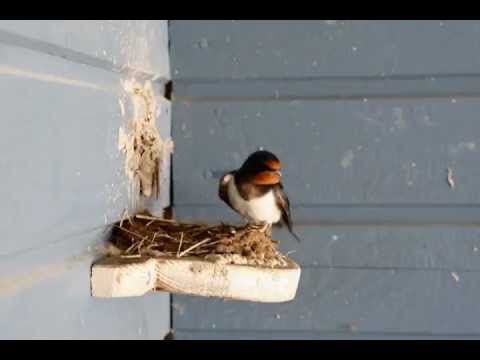 Therefore, on the front of the head and chest, they left a scarlet speck, symbolizing the blood of Christ.
Therefore, on the front of the head and chest, they left a scarlet speck, symbolizing the blood of Christ.
The robin is often mentioned in the works of famous writers and poets, for example, in the lullaby of the Isle of Man "Ushag veg ruy", the novel "Redneck" by Y. Nesbo. There is a whole cycle of paintings about the robin and fabulous creatures by the artist John Anster Fitzgerald. The most famous song about the robin in Russia is the work of VIA "Verasy" "Robins having heard a voice ...".
Keeping the robin at home
Due to its beautiful voice, the robin is often chosen for keeping at home. This bird is unpretentious to food and quickly gets used to the person. The robin will feel quite comfortable in a medium-sized cage made of wood or metal. In order for the bird to please with singing more often, you need to put the cage in a well-lit place, but direct sunlight or drafts should not constantly fall on it. In the warm season, you can keep robins on the balcony..jpg) The cage should have several perches, containers for food, drink and bathing. Robins are very fond of taking baths, so the water in the bath will often have to be changed. It would be advisable to pour river sand on the floor of the cage, which the birds will use for proper digestion. Cleaning in the cage should be done every day, and complete disinfection once every 7-10 days.
The cage should have several perches, containers for food, drink and bathing. Robins are very fond of taking baths, so the water in the bath will often have to be changed. It would be advisable to pour river sand on the floor of the cage, which the birds will use for proper digestion. Cleaning in the cage should be done every day, and complete disinfection once every 7-10 days.
In captivity, the robin is fed:
- mealworms;
- grated carrots;
- hemp seeds;
- porridge;
- ant eggs.
It is enough to give an adult bird 6-8 worms per day. In autumn and winter, it is useful to feed robins with berries.
Robins do not coexist well with other bird species and do not get along in a large group. It is best if you get a couple of robins. If you organize a nest for them, they can lay eggs and breed. An ordinary small box with a hole is suitable for this. It is desirable that it be made of wood and have a sufficiently large entrance not less than 6 cm in diameter.
INTERESTING FACT. Robins are excellent parents and can even feed other people's chicks, in nature this is used by cuckoos.
How to catch a robin
Bird markets or pet stores sell robins very rarely. To get yourself this bird, you can catch it with a special trap with a slamming door. It is necessary to find a place where robins live, set 2-3 traps with worms or mountain ash and wait for the bird to get there. Robins are very trusting and are not afraid of humans. Noticing the food, the bird will jump on the door and fall into the trap.
Despite high mortality and a large number of enemies, the number of robins remains stable and nothing threatens the species. Active breeding 2-3 times a year and breeding in captivity allow you to save their population. It has about 200 thousand individuals, most of which live in Europe. However, people should think about preserving the habitat of these sociable birds, so as not to put the species on the brink of extinction.
How to save a chick that has fallen out of the nest | Animal Encyclopedia
With the arrival of warm weather, our forests and gardens are filled with bird songs, and people, in turn, try to spend as much time as possible outdoors. During outdoor recreation, helpless chicks are often found. Naturally, there is a desire to save the life of a baby, but not everyone knows how to save a chick that has fallen out of the nest. Let's see how we can help him.
To save or not to save - that is the question
The first thought that arises when looking at a fledgling and flightless chick is “fell out of the nest”, “lost” and even “parents abandoned and forgot”. In fact, the chick is alone, no brothers, sisters, or adult birds are visible nearby, and it also screams loudly. How can you help here? But the fact of the matter is that help is at 95% of cases in such situations is not needed.
The fact is that in many birds (primarily small passerines) chicks leave the nest as half-fledged fledglings. During this period of life, they still do not know how to fly, but they are already actively exploring the surrounding space - they climb branches, clumsily flit. It is these rather active chicks that fall into the field of human vision. It is easy to determine the fledgling in appearance: it is feathered or covered with rudiments of unopened feathers; the chick is quite large (about 50-70% of the size of a sparrow), it is often active, that is, it opens its mouth and asks for food. Parents did not abandon this chick, but simply flew away for food. Of course, while you are standing next to the chick, they will not make themselves felt. And if you stay too long, then there is a chance that the parents will leave him out of concern.
During this period of life, they still do not know how to fly, but they are already actively exploring the surrounding space - they climb branches, clumsily flit. It is these rather active chicks that fall into the field of human vision. It is easy to determine the fledgling in appearance: it is feathered or covered with rudiments of unopened feathers; the chick is quite large (about 50-70% of the size of a sparrow), it is often active, that is, it opens its mouth and asks for food. Parents did not abandon this chick, but simply flew away for food. Of course, while you are standing next to the chick, they will not make themselves felt. And if you stay too long, then there is a chance that the parents will leave him out of concern.
Even if the chick looks too small and helpless, don't rush to classify it as an orphan. Birds such as warblers, warblers, larks, wagtails nest on the ground, their chicks spend their entire childhood on the grass. Your presence in this situation is also undesirable because magpies and crows track human behavior. Smart birds can check after you leave what you saw there, find and kill the chick. Hence the conclusion: do not "save" everything that catches your eye. If the chick is dry, warm, active, well feathered, then he does not need help.
Smart birds can check after you leave what you saw there, find and kill the chick. Hence the conclusion: do not "save" everything that catches your eye. If the chick is dry, warm, active, well feathered, then he does not need help.
What if the situation causes concern? Perhaps the chick is too weak or obviously fell out of the nest from a great height and cannot be returned to its parents. In this case, you can try to save him, but keep in mind that the likelihood of success will be directly proportional to your diligence, and you will have to put in a lot of work.
What to do first
- Quickly and carefully inspect the place where you found the chick, remember how it looks. In some cases, this will help determine the type of bird.
- Pick up the chick (don't squeeze too hard!) and bring him home as soon as possible.
- On the way, inspect the chick for damage. If the bird has clearly visible fractures of the paws, wings, concussion (how to define it a little lower), then you can’t do without a veterinarian.
 It is highly desirable to seek help from a veterinarian who specializes specifically in the treatment of birds (unfortunately, such specialists are extremely rare). If there are no obvious signs of a fracture, and the general condition of the chick is satisfactory, then it is better not to torment him, but simply to provide good conditions - nature will do its job and he will recover.
It is highly desirable to seek help from a veterinarian who specializes specifically in the treatment of birds (unfortunately, such specialists are extremely rare). If there are no obvious signs of a fracture, and the general condition of the chick is satisfactory, then it is better not to torment him, but simply to provide good conditions - nature will do its job and he will recover. - Providing a chick with food as soon as possible is even more important than furnishing a home for it.
Now a few words on how to define contusion. Usually, chicks get severe bruises either from hitting the ground or when they collide with cars. At the same time, the bird has no wounds on the outside, but a concussion is observed. True signs of this condition are bleeding from the nostrils, paralysis of both legs or paralysis of half of the body (paw and wing on one side), closure of one eye, or unequal degree of pupillary dilation on the injured and healthy side of the body.
What to feed
You may think that feeding a chick is easy - crumble bread and crumble. But here you will find disappointment number 2. Chicks do not eat bread, crackers, porridge, cereals, seeds. They don't eat at all. Even the chicks of granivorous birds do not take dry food at first. And the reason is that the growing organism needs proteins, therefore, in nature, even granivorous birds feed their offspring with animal food and exceptionally soft food. You will have to do the same. Pigeons are the only exception. They feed the chicks with goiter secretions - bird's milk, and then with semi-digested grains. If you picked up a pigeon chick, then you can feed it with unsalted porridge, gradually reducing the degree of cooking. In other cases, the best food for the chick is mealworms, cockroaches, crickets, darkling larvae - zoophobus (all these foods are sold in pet stores), earthworms (you can dig up), caterpillars (you will have to collect), a boiled egg (only as an additional food, and not a substitute for anything and everything). Even if you have provided the chick with the listed food, it is recommended to periodically catch bugs, grasshoppers, butterflies, flies, mosquitoes and give these insects to him, because the more varied the diet, the healthier your ward will grow.
But here you will find disappointment number 2. Chicks do not eat bread, crackers, porridge, cereals, seeds. They don't eat at all. Even the chicks of granivorous birds do not take dry food at first. And the reason is that the growing organism needs proteins, therefore, in nature, even granivorous birds feed their offspring with animal food and exceptionally soft food. You will have to do the same. Pigeons are the only exception. They feed the chicks with goiter secretions - bird's milk, and then with semi-digested grains. If you picked up a pigeon chick, then you can feed it with unsalted porridge, gradually reducing the degree of cooking. In other cases, the best food for the chick is mealworms, cockroaches, crickets, darkling larvae - zoophobus (all these foods are sold in pet stores), earthworms (you can dig up), caterpillars (you will have to collect), a boiled egg (only as an additional food, and not a substitute for anything and everything). Even if you have provided the chick with the listed food, it is recommended to periodically catch bugs, grasshoppers, butterflies, flies, mosquitoes and give these insects to him, because the more varied the diet, the healthier your ward will grow. Very weak chicks should be given glucose-sweetened water (not sugar syrup!), instead of solid food, for the first few hours.
Very weak chicks should be given glucose-sweetened water (not sugar syrup!), instead of solid food, for the first few hours.
What not to feed the chicks
- dead insects - no matter what species they belong to and wherever you find them. In nature, insects almost never live to old age, rather someone will eat them. If you find a dead cockroach behind the stove or a dead locust in the garden, do not rush to rejoice. Most likely, this individual died from an insecticide, which means that the poison from the feed can enter the body of the chick and greatly harm its already poor health;
- Colorado potato beetles - adults, larvae and eggs are poisonous in this species. They are not eaten by any species of birds, so this easily accessible resource will have to be forgotten;
- ladybugs - they secrete a moderately toxic liquid, in nature a bird that has caught such a bug by mistake will spit it out.
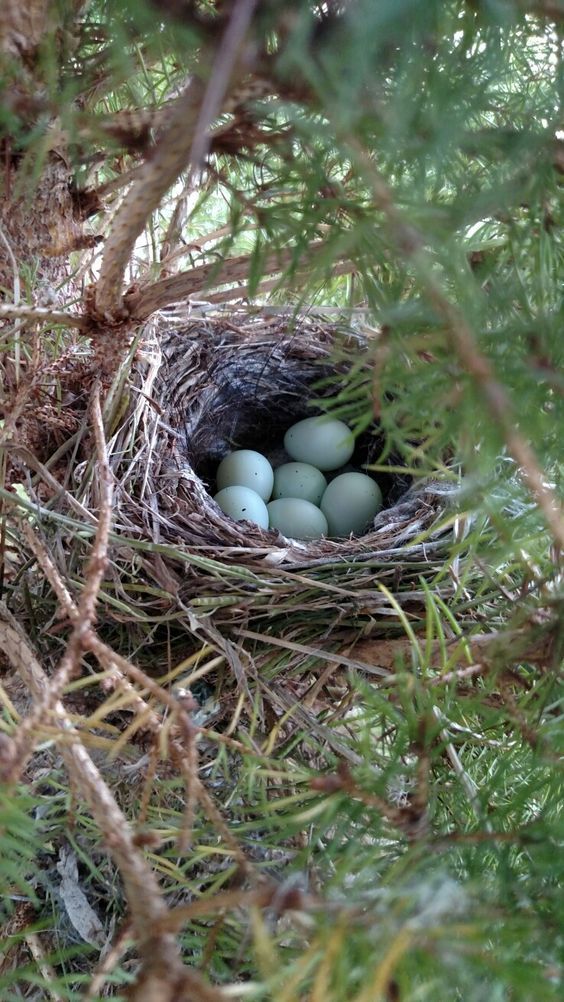 In captivity, especially in the case of force-feeding the chick, he does not have the opportunity to refuse harmful food, so he can get poisoned;
In captivity, especially in the case of force-feeding the chick, he does not have the opportunity to refuse harmful food, so he can get poisoned; - hairy caterpillars - firstly, they can be poisonous, and secondly, the villi during feeding can clog the chick's goiter and it will die. Although cuckoos and orioles can eat in the temperate hairy strip, it is still better to play it safe and not use this food;
- brightly colored bugs - in nature, many birds willingly peck at such insects, but this mainly concerns nondescript turtle bugs. The back of the bug, decorated with bright spots or stripes, is of a warning nature - "do not eat me, it will be worse for you." For safety net, it is not necessary to catch such specimens for the chick.
How to feed
The main thing you need to know from the very beginning is that birds have a very high metabolism, and small chicks have a huge metabolic rate. Any food eaten by the chicks is digested very quickly and they need to be fed again and again.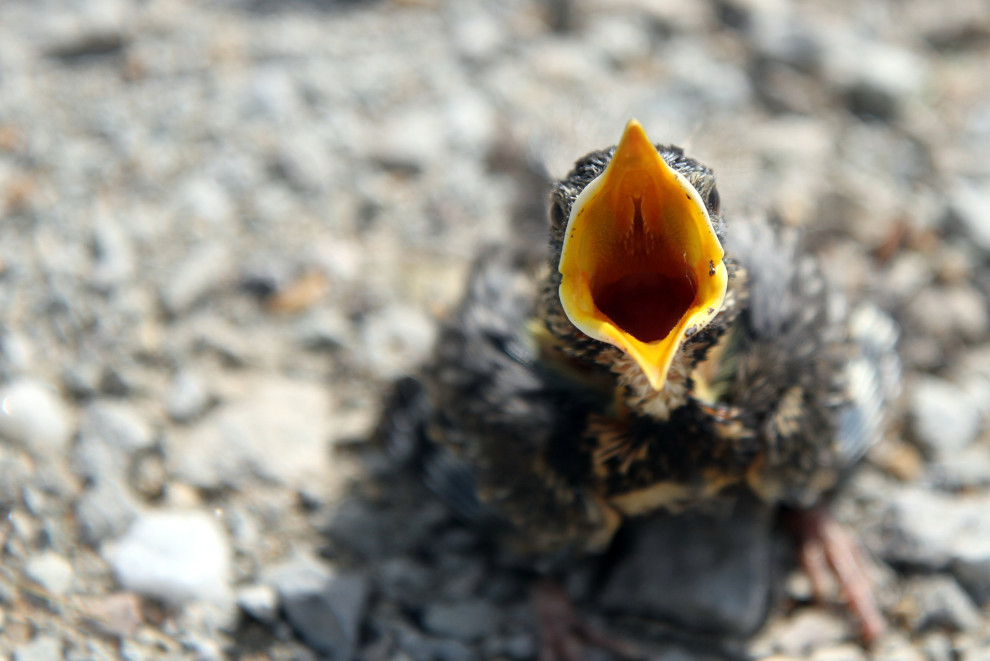 In nature, parents jointly feed the brood 100-500 times a day! This means that every 10-15 minutes the chick needs to be fed. And don't expect to overtrain him! A chick deprived of food instantly weakens, a couple of hours of hunger is enough for it to die. You will have to provide the baby with constant supervision, feed him at first every 15 minutes, and when he grows up a little, after 20-30. But you need to take a break at night, but start the first feeding no later than 6 o'clock in the morning! Evening feeding is completed around sunset, that is, around 22.00.
In nature, parents jointly feed the brood 100-500 times a day! This means that every 10-15 minutes the chick needs to be fed. And don't expect to overtrain him! A chick deprived of food instantly weakens, a couple of hours of hunger is enough for it to die. You will have to provide the baby with constant supervision, feed him at first every 15 minutes, and when he grows up a little, after 20-30. But you need to take a break at night, but start the first feeding no later than 6 o'clock in the morning! Evening feeding is completed around sunset, that is, around 22.00.
It is more convenient to bring food with tweezers. In general, tactile contact should be kept to a minimum, frequent touching is stressful for the tiny creature, and it worsens the condition of down and feathers. If the chick is very small and naked, then it is not necessary to give it a whole large insects. In this case, it is better to cut them with tweezers and feed them in pieces. It is also recommended to remove hard elytra from large beetles, long legs from grasshoppers and locusts.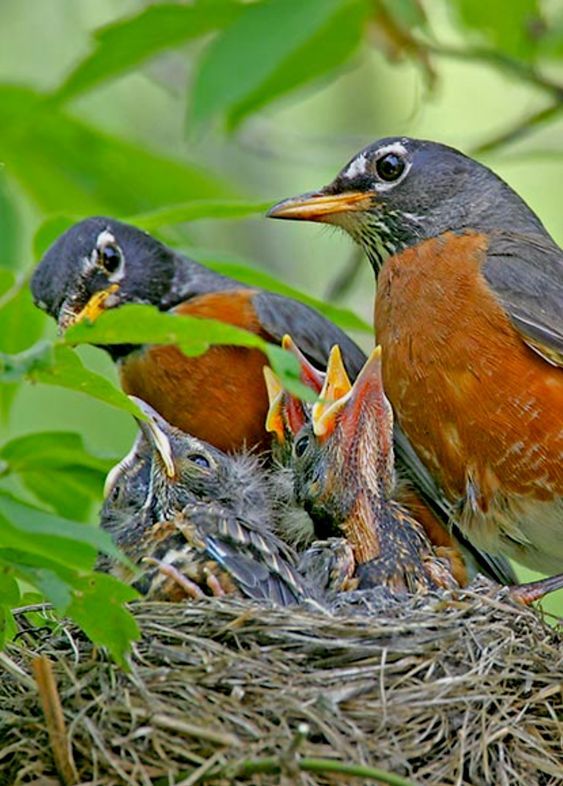 Often the chicks refuse to take any food. This happens because they do not recognize you as their mother, or they are so weak that they have lost their appetite. In this case, you will have to force-feed the ward. To do this, you need to crush the food and fill it with a syringe without a needle (you can add a couple of drops of water to dilute the mixture). Take the bird in your left hand and gently spread its beak with your fingers, insert a syringe into its mouth with your right hand and squeeze out about 1 cm³ of slurry. Do not overdo it! In tiny chicks, the beak is easily broken, and this is already a fatal injury. For greater convenience, a flexible tube can be put on the end of the syringe.
Often the chicks refuse to take any food. This happens because they do not recognize you as their mother, or they are so weak that they have lost their appetite. In this case, you will have to force-feed the ward. To do this, you need to crush the food and fill it with a syringe without a needle (you can add a couple of drops of water to dilute the mixture). Take the bird in your left hand and gently spread its beak with your fingers, insert a syringe into its mouth with your right hand and squeeze out about 1 cm³ of slurry. Do not overdo it! In tiny chicks, the beak is easily broken, and this is already a fatal injury. For greater convenience, a flexible tube can be put on the end of the syringe.
Where to house
If the first difficulties do not dampen your enthusiasm, then you should provide a shelter in your house for the chick. First of all, you need to make a nest.
Take a deep bowl or cardboard box with a rim about 10 cm high. Fill this container with sawdust, dry clean sand, hay, straw, scraps of cloth, make a recess in the middle that imitates the nest tray. Do not fill the container with fresh grass, raw material can cause hypothermia of the chick, because there is no one to warm it in an artificial house. By the way, if you are seriously engaged in rescue, you can purchase a small thermal mat at the pet store, it will to some extent replace the mother's warmth for your pupil. Also, cotton wool, yarn, fabrics with a rare weave of threads can be considered dangerous fillers. The paws of a chick are easily tangled in such material, and a tightened thread can even amputate the fingers of a feathered baby. Lay a paper napkin in the tray in 2-3 layers. Chicks defecate as often as they eat; in nature, their parents monitor their hygiene and take the litter out of the nest. You just need to change the napkin after each feeding. So, the nest is ready.
Do not fill the container with fresh grass, raw material can cause hypothermia of the chick, because there is no one to warm it in an artificial house. By the way, if you are seriously engaged in rescue, you can purchase a small thermal mat at the pet store, it will to some extent replace the mother's warmth for your pupil. Also, cotton wool, yarn, fabrics with a rare weave of threads can be considered dangerous fillers. The paws of a chick are easily tangled in such material, and a tightened thread can even amputate the fingers of a feathered baby. Lay a paper napkin in the tray in 2-3 layers. Chicks defecate as often as they eat; in nature, their parents monitor their hygiene and take the litter out of the nest. You just need to change the napkin after each feeding. So, the nest is ready.
Now we need to think about security. In the house of the savior, stupid children, blind-sighted grandmothers, dogs, cats can live, and there are also curious neighbors who have dropped in for a minute. All these creatures threaten the life of a little chick: children can grab it and squeeze it in a fist (certain death), dogs and cats can arrange a hunt (you won’t even find feathers), a blind grandmother will sit by chance on a box (well, don’t execute the old woman for this), and noisy neighbors can accidentally knock it over (“Tanya, I’ll come to you for a second for salt, oh, it seems that something has fallen here!”). To prevent trouble, it is better to place the nest in a cage or an aquarium covered with gauze. In the cage, do not try to put the chick on the perch, do not place it in closed containers (jars, etc.). Don't nest on high ground. The fact is that a weak chick can get stronger and, unexpectedly for you, will go to explore the surrounding space. He is guaranteed to fall out of his shelter and, unlike the forest and the meadow, it will not be soft grass waiting for him at the bottom, but the floor. You should not put the box with the chick in the sun, so you will not warm it, and the helpless bird is guaranteed to get sunstroke and may die.
All these creatures threaten the life of a little chick: children can grab it and squeeze it in a fist (certain death), dogs and cats can arrange a hunt (you won’t even find feathers), a blind grandmother will sit by chance on a box (well, don’t execute the old woman for this), and noisy neighbors can accidentally knock it over (“Tanya, I’ll come to you for a second for salt, oh, it seems that something has fallen here!”). To prevent trouble, it is better to place the nest in a cage or an aquarium covered with gauze. In the cage, do not try to put the chick on the perch, do not place it in closed containers (jars, etc.). Don't nest on high ground. The fact is that a weak chick can get stronger and, unexpectedly for you, will go to explore the surrounding space. He is guaranteed to fall out of his shelter and, unlike the forest and the meadow, it will not be soft grass waiting for him at the bottom, but the floor. You should not put the box with the chick in the sun, so you will not warm it, and the helpless bird is guaranteed to get sunstroke and may die.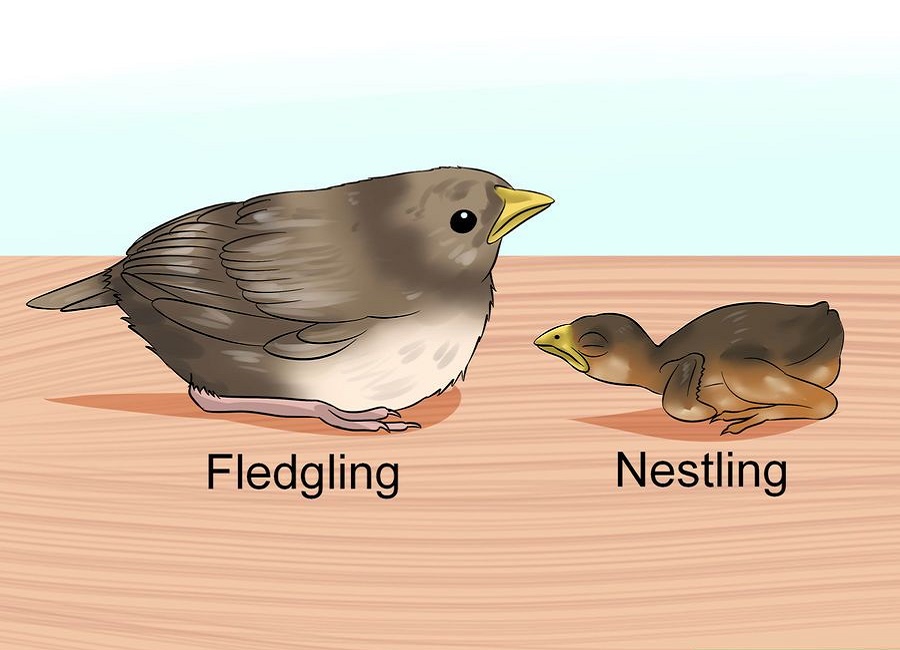 Drafts are very dangerous.
Drafts are very dangerous.
Do chicks need water?
In nature, chicks of passerine birds do not need water, as they get enough moisture with food. After all, adult birds do not bring them water in their beaks. At home, you can do without watering the chick if you follow the diet, that is, you give a variety of, and most importantly, “wet” food - earthworms, fatty juicy caterpillars. Flies, cockroaches, crickets (they are most often bought in a store) can be conditionally classified as “dry” food. They do not give the chick enough moisture. In this case, he can instill a few drops of liquid from a pipette, but do this not at every feeding, but a little less often. Please note that shell-shocked chicks should not be given water.
What to do next?
Fortunately, the chicks grow up quickly and the period of trouble soon passes, in a week or two your ward may become quite strong. In order for the feeding process to be completed successfully, do not forget to gradually accustom the chick to adult food.